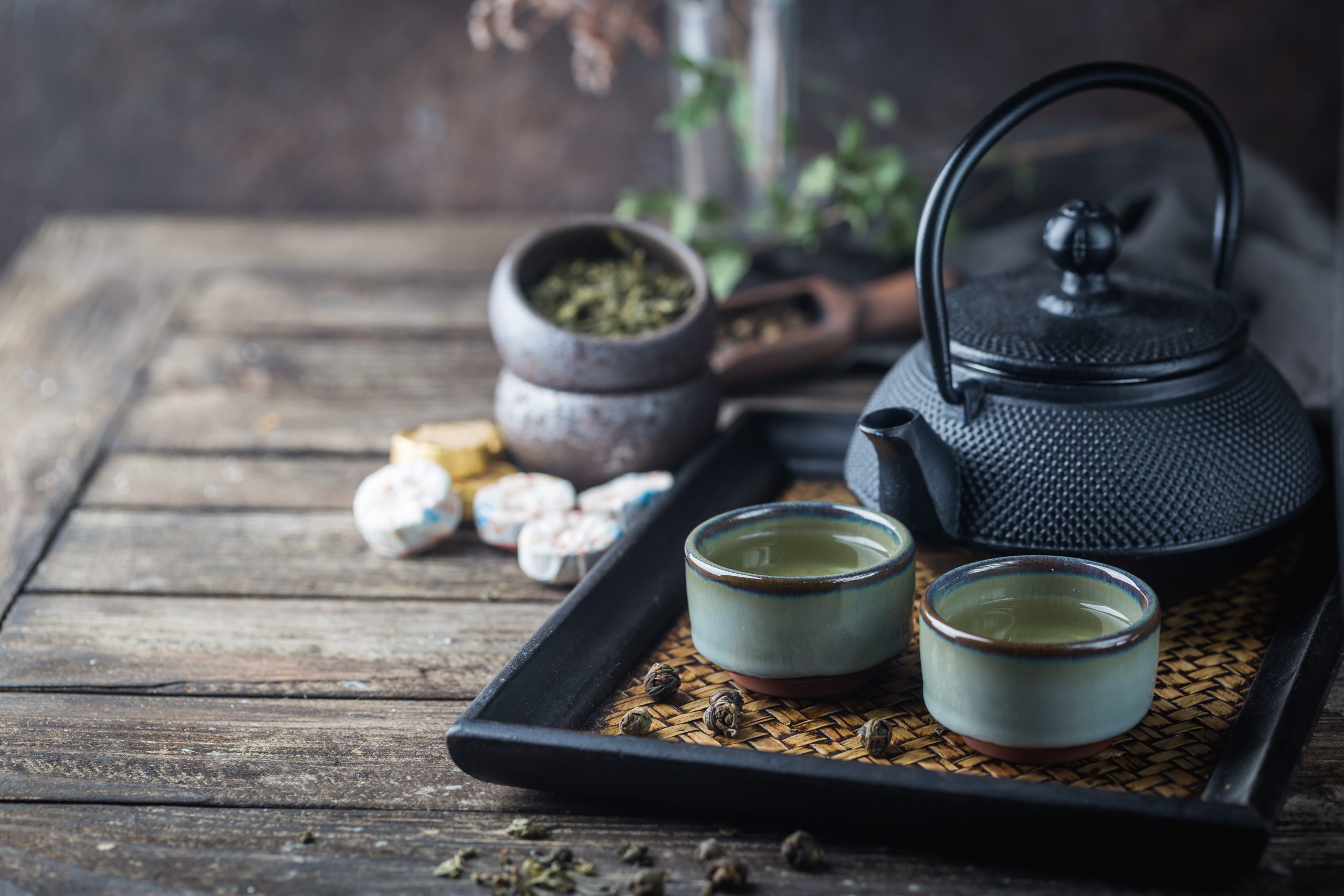
Myth or Science: The Health Benefits of Tea
By Pei Chen
The aroma of tea, cultivated for thousands of years, rode the wind from the East to the West. Today, tea is among the most popular beverages in the world (Hayat et al., 2015). Other than the refreshment and energy it provides, there may be some surprises unbeknownst to many tea-drinkers that this age-old beverage can bring to the table.
As early as the Tang Dynasty (619 to 907 A.D.), Chinese tea master Lu Yu asserted the therapeutic nature of tea-drinking in his work, “The Classic of Tea.” Later on, with the technological advances of modern science, many studies—performed in vitro (cell culture) and in vivo (mice)—indicate green tea’s unique antioxidant and anti-inflammatory properties as well as its facilitation of lipid breakdown. The majority of green tea’s potential health benefits originates from polyphenols, which comprises approximately 18% to 36% of tea leaves.
Polyphenols are responsible for the bitter taste in tea. In plants, these organic compounds protect them from ultraviolet radiation; in humans, polyphenols can suppress the excess formation of reactive oxygen species (ROS) (Hussain et al., 2016).
As its name suggests, ROS is an umbrella term for oxygen ions and radicals containing oxygen (Sies & Jones, 2020). They are compounds that participate in cell homeostasis as signaling molecules and byproducts of cellular respiration (Auten & Davis, 2009). However, elevated concentrations of ROS leads to oxidative stress, which manifests as growth arrest, cell death, inflammation, and tumor growth (Sies & Jones, 2020). To assist our body in regulating ROS amount, dietary antioxidants such as polyphenols can be helpful.
While there are different types of green tea polyphenols, catechins remain the most abundant type. In search of catechin with the most therapeutic activity, scholars shine the spotlight on (-)-epigallocatechin-3-gallate (EGCG), which accounts for 59% of total catechin in tea leaves (Xing et al., 2019).
Aside from these more well-known antioxidant effects of tea polyphenols, its anticancer potential promotes further studies. After decades of research on natural compounds’ application in cancer therapy, many researchers explored EGCG’s promising anticancer capabilities. Multiple studies in mice indicated that EGCG can decrease cancer cell replication and increase apoptosis (programmed cell death due to damage), both of which aid in the suppression of tumor cell migration and proliferation.
Considering all the spectacular benefits of tea polyphenols, one may wonder: Would drinking tea actually achieve the effects discussed above? The answer is likely yes, but to an extent. A research cites that only 0.1% of EGCG from drinking tea ends up absorbed into one’s system (Xing et al., 2019). The low bioavailability described may encourage people to drink more tea in order to attain prominent effects. However, one must also consider the possibility of toxic consequences that overconsumption can cause on the body.
So the challenge presents itself: How can we find the balance between sufficient intake of EGCG for therapeutic purposes and preventing potential toxicity from overconsumption? This inquiry drives scientists to explore new methods of administering the compound. A study published in Scientific Report indicates promising results by utilizing EGCG in conjunction with “nanochemoprevention”—preventing cancer development via chemotherapy that employs nanotechnology (Sanna et al., 2017).
In this study, researchers targeted a surface protein of prostate cancer cells by developing nanoparticles and placing EGCG within the nanoparticles —— a solution to the dilemma of preventing toxicity while ensuring efficacy. In the in vivo experiment, tested on mice, there is 60% tumor growth inhibition with targeted nanoparticles, higher than the control and pure EGCG (Sanna et al., 2017). While the research was done on mice, these results reveal that the EGCG-encapsulated nanoparticles are a promising cancer treatment.
To this day, scientists continue to explore the chemical intricacies and therapeutic applications of tea polyphenols. With this in mind, we can enjoy our morning, afternoon, or evening tea knowing that every sip of tea may make our bodies a bit healthier.
References
Auten, R. L., & Davis, J. M. (2009). Oxygen toxicity and reactive oxygen species: The Devil is in the details. Pediatric Research, 66(2), 121–127. https://doi.org/10.1203/pdr.0b013e3181a9eafb
Hayat, K., Iqbal, H., Malik, U., Bilal, U., & Mushtaq, S. (2015). Tea and its consumption: benefits and risks. Critical Reviews in Food Science and Nutrition, 55(7), 939–954. https://doi.org/10.1080/10408398.2012.678949
Hussain, T., Tan, B., Yin, Y., Blachier, F., Tossou, M. C. B., & Rahu, N. (2016). Oxidative stress and inflammation: What polyphenols can do for us? Oxidative Medicine and Cellular Longevity, 2016, e7432797. https://doi.org/10.1155/2016/7432797
Sanna, V., Singh, C. K., Jashari, R., Adhami, V. M., Chamcheu, J. C., Rady, I., Sechi, M., Mukhtar, H., & Siddiqui, I. A. (2017). Targeted nanoparticles encapsulating (−)-epigallocatechin-3-gallate for prostate cancer prevention and therapy. Scientific Reports, 7(1), 41573. https://doi.org/10.1038/srep41573
Sies, H., & Jones, D. P. (2020). Reactive oxygen species (ROS) as pleiotropic physiological signalling agents. Nature Reviews Molecular Cell Biology, 21(7), 363–383. https://doi.org/10.1038/s41580-020-0230-3
Xing, L., Zhang, H., Qi, R., Tsao, R., & Mine, Y. (2019). Recent advances in the understanding of the health benefits and molecular mechanisms associated with green tea polyphenols. Journal of Agricultural and Food Chemistry, 67(4), 1029–1043. https://doi.org/10.1021/acs.jafc.8b06146
